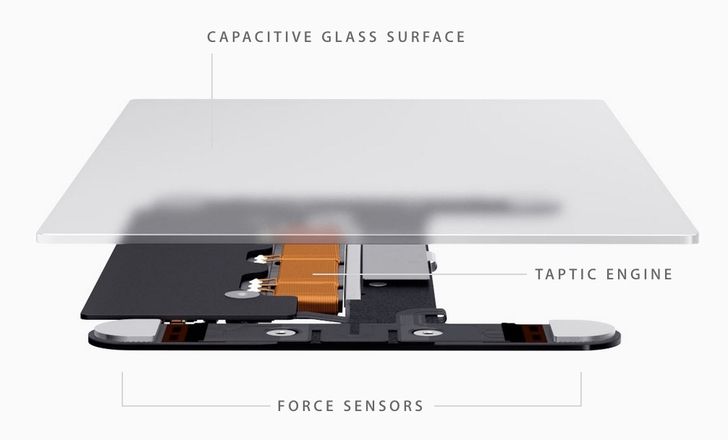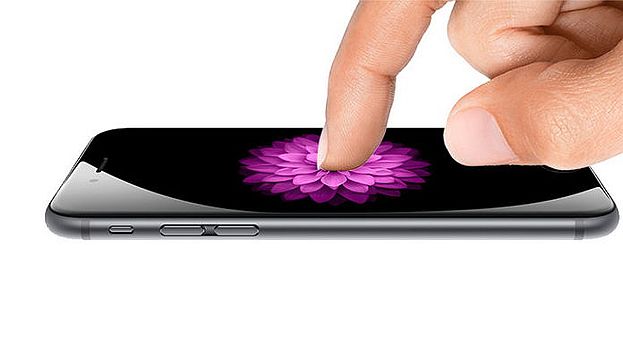Apple introduced its new Force Touch technology earlier this year with its new Macbook, and this technology is about to make its way into the new iPhones and iPads, according to reports in the Wall Street Journal (as reported by The Verge) and elsewhere. While this rumored development hasn’t attracted much attention, the long-term implications for gaming and the game industry as a whole are profound. When iPhones and iPads with Force Touch become the standard, mobile gaming can really make inroads on many genres currently limited to PCs and consoles.
What is Apple’s Force Touch technology Essentially, it adds two key elements to touch pads (and soon, to touch screens): pressure-sensing and haptic feedback. Right now touchscreens only detect where you’re touching it, and how long you maintain that touch. Yes, you can also have multiple fingers touching the screen, and the screen can also track movement (like those swipes you use in Fruit Ninja, or how you pull back the slingshot in Angry Birds). What current touchscreens can’t do is sense how hard you are pressing, but Force Touch adds that extra dimension by placing pressure sensors under the screen.
Force Touch adds more than just pressure-sensing, though — the haptic feedback uses precise vibration to give a convincing illusion that you have clicked the screen. The Taptic Engine (also used in the Apple Watch) can simulate other sensations as well, and can fool you into thinking the trackpad is moving. The combination of the pressure-sensing and the haptic feedback opens up immense possibilities for game designers.
Why is Force Touch so important for gaming Because one of the criticisms of touchscreen games has been the lack of feedback in the controls, which makes it very difficult to create certain game genres on touchscreens (like fisrt-person shooters). Keyboards, mice, and videogame console controllers let you input commands to a game without the need to take your eyes of the screen. You quickly learn where the right buttons are, and thus games like Call of Duty or League of Legends can keep your attention focused on the screen. If you need glance down to see where a button is, you’re probably dead in that instant.
Now imagine an iPad or an iPhone where you can have touchpoints on the screen (even user-defined or adjusted) where the haptic feedback can keep you aware of where your fingers are. Moreover, you can use the pressure sensitivity to alter your game input — switching from burst to autofire, for instance, or engaging an afterburner for extra movement. You could be playing fast action games without having to pay close attention to your fingers, which would make popular game genres (sports, FPS, simulations) much better on mobile than they currently are.

The marketing implications are equally important. First off, Apple is reportedly asking suppliers to build 90 million new iPhones before the end of the year — if they sell that many the new iPhone instantly becomes one of the most popular game devices of all time, with an installed base about the same size as the Xbox 360 or PS3. In three short months. Throw in another 15-20 million iPads on top of that, and by the end of the year there are over 100 million mobile devices with this capability. By the end of 2016, it would be more than double that number.
Don’t forget that these new iPhones and iPads will have even more powerful CPUs and GPUs, giving them gaming power greater than the Xbox 360 and PS3, and in some ways more powerful than the Xbox One and PS4 (producing higher resolution images, for one thing, like CSR Racing 2). Imagine a Mario Kart that’s just as fast, and prettier, than what you can play on a 3DS. Or a FIFA Soccer or Madden Football with the fast action you enjoy on consoles.
Now take the implications one step further. It’s clear Apple is very interested in bringing out a new Apple TV with much more powerful graphics and a full App Store, along with its music streaming service and an array of video viewing options. The missing part, for game companies, is the controller. That’s typically a $50 item for a Bluetooth controller, which would drive the Apple TV well past that sweet $99 price point they are aiming at. And why would Apple do that if a significant part of the audience wouldn’t be immediately interested in a controller
Ah, but what if Apple could give you a very good game experience with your iPhone or iPad as your game controller, used with the Apple TV If you didn’t have to look down at the iPhone or iPad, the Apple TV could deliver any console game genre you like. Yes, a full regular controller would be better, and of course the hard-core gamers could buy one. But even hardcore gamers would enjoy being able to play multiplayer games with a group of friends without having to buy extra controllers.
Force Touch technology holds the potential to turn mobile devices into full-range gaming devices, with no need to say “well, but there are certain genres you can’t really do well” any more. Moreover, with Force Touch in place on iPhones and iPads, the new Apple TV becomes an impressive challenger indeed to the existing console market. No, it won’t be able to touch the number of polygons an Xbox One or a PS4 can deliver, but then again it would only be $99.
So brace yourselves for a revolution in the gaming market, as Apple bids to make mobile a strong competitor to to most of the leading game genres, if not all of them. And, in the process, creating an even bigger market for core gaming. It’s going to be an interesting year ahead.

